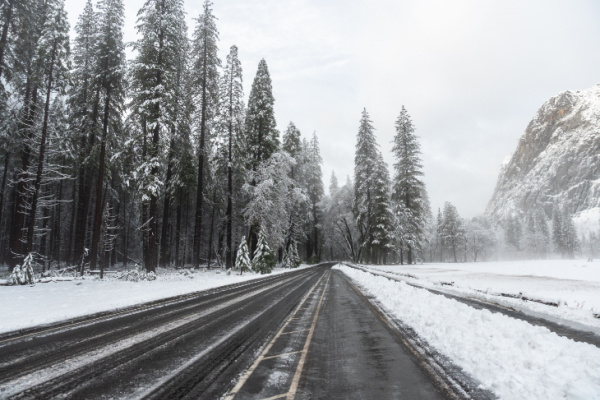“All systems go for a major and unusual storm,” the National Weather Service said in its forecast last Wednesday.
The powerful winter storm that moved through California dropped heaps of rain, sleet and snow across much of the state, including Southern California, where several feet of fresh powder fell in the mountains of Los Angeles and Ventura counties at elevations as low as 1,500 feet Thursday into Friday, closing major freeways due to snow and ice at the higher elevations, and even flooding Interstate 5 in the L.A. Basin.
The event is unusual even in a winter of unusual events, climate experts say. The state already defied forecasts for a dry winter driven by La Niña when a series of nine atmospheric river storms pummeled California in January — the wettest three-week period on record, according to state officials.
Now, portions of Los Angeles and Ventura counties experienced a blizzard, of all things. Even the blizzard warning itself was only the second such warning ever the weather service is aware of. The mountain areas received one of the “largest amount of 24- [to] 48-hour snowfall seen in decades,” rivaling a winter storm in 1989, forecasters said.
Daniel McEvoy, a regional climatologist with Western Regional Climate Center, said the rare system is part of a larger-scale circulation pattern in the Western U.S. that has been in place through much of winter and has locked in a lot of cold air. “This has been one of the coldest winters in many decades for a lot of places,” McEvoy said. “The fact that we’re having another cold storm this winter is not that surprising, but the magnitude — and how the ingredients are setting up to impact Southern California especially — is looking pretty rare.”
The system was driven by an area of low pressure off the coast of California that slowly traveled south from Canada, he said. Within that main system are multiple “waves of energy” due to the flow of the jet stream, or the air currents in the upper level of the atmosphere that guide weather systems across the globe.
Though it is not like the “classic” atmospheric rivers that hit the state in late December and early January, the system connected with moisture over the Pacific as it moved through California, resulting in the heavy rain and snowfall.
“The forecast has a lot of snow, and snow at really low elevations, as opposed to the storms that we saw in early January that had a completely different flow where the jet stream was coming from the west, or even the south, and bringing up warmer air, which led to really high snow levels during that series of storms,” he said.
The effects of the storm were wide-ranging and even dangerous, including road closures, flooding, power outages, downed trees and other hazards. In an RV park in Valencia, several RV’s and large trees were washed into the neighboring Santa Clara River as the park gave way from the soaking rain.
“This is a rare setup for us,” said Brayden Murdock, a meteorologist with the weather service in the San Francisco Bay Area. “If this whole system was pushed a little more off to the east, it probably would have been more of a dry, strong wind event, but since it gets the opportunity to interact with the Pacific, that’s why we’re getting all this moisture on top of it.” Indeed, it was only months ago when forecasters called for a drier-than-normal winter driven largely by La Niña, a climate pattern in the tropical Pacific.
But La Niña is transitioning into a more neutral pattern, said National Weather Service meteorologist Lisa Phillips. The latest seasonal outlook issued by the National Oceanic and Atmospheric Administration (NOAA) now shows equal chances of wetness or dryness in almost all of California through May.
McEvoy, the climatologist, said the moist system speaks to the challenges of long-term forecasting. Since about November, the jet stream has been digging out an area of low pressure that has been persistent over much of the West Coast, he said. “The atmosphere has gotten locked into this pattern this winter, and it doesn’t look like it’s going to be breaking anytime soon,” he said.
—
Photo Credit: Kyungjun Kim / Shutterstock.com
